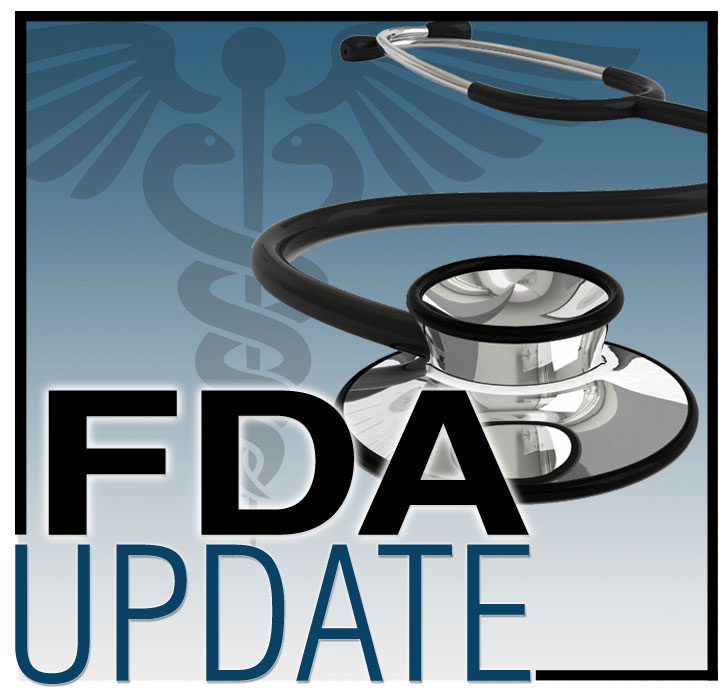FDA Grants Nivolumab Accelerated Approval for Third-Line Treatment of Metastatic SCLC

On August 16, 2018, the U.S. Food and Drug Administration (FDA) granted accelerated approval to nivolumab for patients with metastatic small cell lung cancer (SCLC) with progression after platinum-based chemotherapy and at least one other line of therapy.
- Read more about FDA Grants Nivolumab Accelerated Approval for Third-Line Treatment of Metastatic SCLC
- Add new comment
FDA Approves Lenvatinib for Unresectable Hepatocellular Carcinoma

On August 16, 2018, the U.S. Food and Drug Administration (FDA) approved lenvatinib capsules for first-line treatment of patients with unresectable hepatocellular carcinoma.
How APRNs Can Support Patients During Oral Agent Treatment

Oral agents offer many patient benefits, one of which is the freedom to take the medication at home, allowing them to keep their daily routine and gain additional time and independence they would have spent traveling to the clinic for treatment. However, with that freedom comes additional patient responsibilities, and preparation from advanced practice RNs (APRNs) is necessary to ensure patients can self-manage symptoms and adhere to administration regimens. Research shows that patients experience severe symptoms on oral agents that may cause them to miss as many as one-third of the prescribed doses. How can APRNs empower patients to adhere to the treatment plan and ensure safe symptom self-management at home?
Oncology QCDR Ensures Providers Meet Merit-Based Reporting for CMS
Study Finds Association Between Increased BMI and Lower Breast Cancer Risk in Young Women

Young women with high body fat have a decreased chance of developing breast cancer before menopause, according to a new study published in JAMA Oncology. The finding may help researchers better understand the role obesity plays in breast cancer risk.
- Read more about Study Finds Association Between Increased BMI and Lower Breast Cancer Risk in Young Women
- Add new comment
Congress, Board Goals, and More Are Key Discussions During June Board Meeting

Look for some new changes related to ONS Board of Directors activities during the 44th Annual ONS Congress in Anaheim, CA, in April 2019. During its June 2018 meeting, the Board discussed and made decisions about two Congress-related topics: the annual business meeting and the inclusion of leadership awareness.
- Read more about Congress, Board Goals, and More Are Key Discussions During June Board Meeting
- Add new comment
An Oncology Nurse’s Guide to Targeted Therapy

Whereas chemotherapy induces apoptosis by interfering with cell division of both cancerous and healthy cells, targeted therapy exploits targets, proteins, enzymes, or genes specific to malignant cells through a variety of mechanisms of action, which helps prevent drug resistance. The agents work by either inhibiting angiogenesis, blocking chemical signals that tell cells to divide or carry out normal function, or delivering toxic substances to a cell.
Medicare for All Is the Dream, But Medicaid for More Could Be the Reality; FDA Commissioner Makes Statement on Supporting New Nicotine Replacement Drug Therapies; How Drug Companies Are Beating Trump at His Own Game

- Read more about Medicare for All Is the Dream, But Medicaid for More Could Be the Reality; FDA Commissioner Makes Statement on Supporting New Nicotine Replacement Drug Therapies; How Drug Companies Are Beating Trump at His Own Game
- Add new comment
Which of the Following Isn’t a Breast Cancer Surveillance Recommendation?

Mrs. Johnson has just been told she's in remission from breast cancer. Which of the following isn't a surveillance recommendation?
A. Routine mammography screening every 12 months for locally recurrent tumors or new primary cancers
B. Screening for cervical and colorectal cancer every six months for two years
C. Gynecologic evaluation every 12 months for women on tamoxifen therapy who have an intact uterus
D. Detailed history and physical examination every three to six months for three years
- Read more about Which of the Following Isn’t a Breast Cancer Surveillance Recommendation?
- Add new comment
TNM Gets an Upgrade in Eighth Edition Staging Guidelines

Nearly a century ago, cancer staging was a simple categorization of disease as either local, regional, or distant. Then in the 1940s, a French surgeon developed the concept for a staging system that uses the size of the primary tumor (T), its lymphatic involvement (N), and the presence of metastases (M) to stage a patient’s cancer based on the anatomic extent of the disease at the time of diagnosis.





